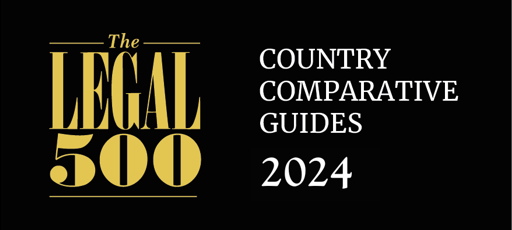
Uncategorized — 23/09/2020
Private: Merger control anno 2020
On 14 July 2020, the European Commission cleared PKN Orlen’s planned acquisition of its rival Grupa Lotos, subject to commitments. Geradin Partners acted as the lead antitrust counsel to PKN Orlen in this highly complex Phase 2 merger control case.
The transaction combines the two Polish refiners active in the wholesale and retail supply of motor fuels in Poland, as well as the commercialization of other refinery products such as jet fuels, bitumen, heavy fuel oil, base oils and lubricants in various countries but with a focus on Poland.
The Commission cleared the deal after giving the green light to a combination of structural and quasi-structural remedies. Most importantly, PKN Orlen will divest a minority stake into the Gdansk refinery currently operated by Lotos and divest or release fuel storage/import capacity throughout the country. In addition, Orlen will also sell a country-wide retail network and bitumen production and storage assets, as well Lotos’ stake in the into-plane business in Poland. These divestments are complemented by behavioral or other quasi-structural remedies such as long-term supply agreements also covering for instance jet fuel in the Czech Republic.
The case illustrates the many challenges merging parties face in 2020 to successfully manage the merger control proceedings before the European Commission. In addition, the case also shows that with the right set of remedies, even in difficult cases clearance can be secured. Below, we list some key lessons to be drawn:
Wholesale remedies are a mix of divestment of refining and enabling imports. The offered remedies, especially those for wholesale market, are complex but address the competitive issues when assessed in combination. The divestment of domestic refining capacities is complemented by infrastructure remedies (divestment and release of storage and import capacities) that will allow the buyer of the stake in the Gdansk refinery and other wholesalers to import fuels into Poland. Therefore, the remedy does not only solve the competitive concerns but also integrates Poland in the European fuels market. The complexity of a remedy does not necessarily plead against it. It is a matter of carefully articulating its main elements and support them with proper data.
The right set of remedies makes the difference. The remedies described above demonstrate that even seemingly difficult cases can be cleared if the parties are willing to be creative and committed to the transaction. Taking a national view, the only two refiners proposed to merge. Nonetheless, the remedies did not need to go as far as divesting one of the refineries. Parties in future cases should be well aware that out of the box remedies are possible provided one can demonstrate with sufficient certainty that the competitive restraint is replaced. Therefore, while a look on previous case law always constitutes a good starting point, advisors and parties alike should not close their eyes to alternative solutions, if suitable.
Importance of market definitions and market shares. Although only an indicator of competition concerns, market shares remain an important element. Therefore, the debate around the appropriate market definition will be a key question until further evolution of the case law. The reference to precedent Commission decisions might in this respect be helpful. It should nonetheless be noted that the ever-increasing number of precedents might in some instances create more confusion than actually provide for helpful guidance. One can for instance doubt whether short Phase I clearance decisions in which potential sub-segmentations have been left open need to be taken into consideration since they did not have any impact on the decision. The Commission should focus on relevant precedents, i.e. market definitions that have been confirmed by market investigations.[1] Otherwise, some of the sub-segments suggested in earlier cases risk being at odds with market reality. The starting point of the analysis cannot thus be that the notifying parties have to reflect all possible segmentations which other companies acting in the same product (but not necessarily geographic) market have made in the past. The increase in complexity induced by this approach does not bring any incremental insight into the market dynamics to the Commission but only increases the burden for the parties. The notifying parties should thus have greater latitude to ignore irrelevant or unclear precedents when these precedents do not provide a plausible framework to analyze the competitive forces on the market.
Managing long proceedings presents an important challenge. Complex merger cases like PKN Orlen/Grupa Lotos necessitate a long pre-notification period in order to complete the Form CO. Moreover, companies must be prepared to face a year or more of proceedings until the final decision. In the present case and due to a stop-the-clock, the duration of the proceedings was almost two years. In sum, buyers should foresee 18-24 months to prepare for the filing and receive clearance in complex case, i.e. cases for which the parties are not able or willing to offer clear cut remedies such as the divestment of the overlapping business in Phase I. This long duration presents a challenge for any buyer as within such long periods the deal need be kept on track in the light of changing economic circumstances (such as, for instance, the Covid crisis). Moreover, such lengthy proceedings might also have a negative impact on the viability of the transaction. Therefore, it is important to manage the expectations of the board and investors. It is important to discuss with the senior management whether offering simpler but more drastic divestments might be more efficient than facing long proceedings. From a procedural perspective, this long duration means that the Commission might have to take into account that market conditions have changed between the first pre-notification contact and the moment of clearance. This does not only relate to the updating of market share tables; changing patterns of supply and demand or technological changes can also have an important impact. Given the ever quicker changing markets, the duty for the Commission to keep up to date with the latest evolutions will only become more important in future.
The parties should be prepared to provide large volume of internal documents. For the past three or four years, it has become increasingly common that the parties have to provide a large number of internal documents in case of complex phase II merger cases. Such practice has for instance been observed in recent cases such as M.7932 Dow/Dupont, and the ArcelorMittal/Ilva transaction, where the Commission requested more than 800,000 internal documents. This unfortunate trend is likely to continue for complex cases. In other words, the parties should prepare upfront for such an exercise. Discussions with the case team with respect to the exact scope of the search terms and the custodians are an important process to try to limit the scope of the request to what is strictly necessary. Moreover, the requests for internal documents are generally sent around the time of the issuance of the decision opening phase II. This is the busy time during which the reply to the decision to open proceedings, as well as the preparation to the State of Play meeting take place. For this reason, the parties should anticipate this request to the extent possible.
The analysis of smaller markets consumes too many resources. Notifying parties need to be prepared to spend significant time and resources to deal with smaller or minor markets. This unfortunate evolution is the consequence of the recent case law of the General Court. For instance, on 26 October 2017, the General Court annulled (T‑394/15) the Commission’s 2014 decision approving the merger between cable companies UPC and Ziggo. In that case, the Commission left open whether a further sub-segmentation of the market for wholesale supply and acquisition of premium pay TV channels in sports and film channels was necessary. The Court ruled that the Commission should have analyzed even briefly the vertical effects on both possible sub-segments, whereas the Commission only assessed the vertical effects on one of the two identified sub-segments. As a consequence, the Commission is now obliged to analyze all possible vertical (and a fortiori) horizontal relationships. To allow both the notifying parties and the Commission to focus on the relevant issues, solutions to this problem should part of any envisaged reform of the merger control regime. A de minimis exception for instance would cut red tape by allowing the Commission to focus its attention on the markets that raise competitive issues.
For further information, please contact:
Philip Lux
+32 470 88 32 50
[1] This is of course more relevant for markets covered by several decisions of which at least some include a market investigation and others not.
News & Publications
View all-
Events and Sponsorship — 27/05/2025
DMCC drinks reception in London
Geradin Partners hosted its second annual reception at The Ned in London for all those involved in the digital markets regime under the UK’s Digital… Continue
-
Announcements — 23/05/2025
Joosua Virtanen joins Geradin Partners as Chief Data Scientist and Principal Economist to lead Geradin Partners AI
We are pleased to announce that Joosua Virtanen has joined Geradin Partners as Chief Data Scientist and Principal Economist as of 15 May 2025. Joosua… Continue


